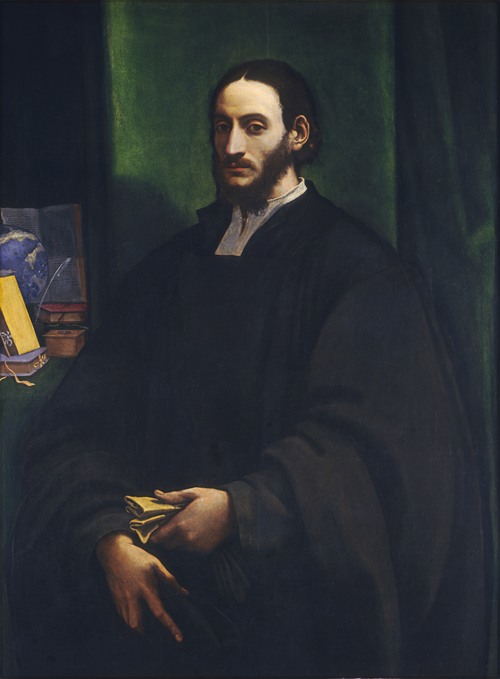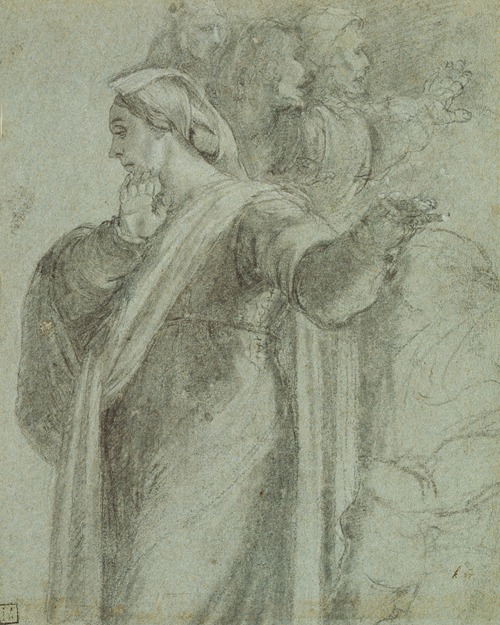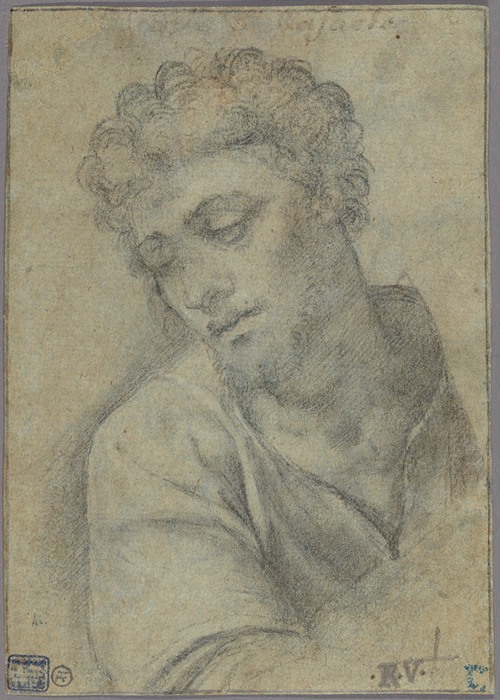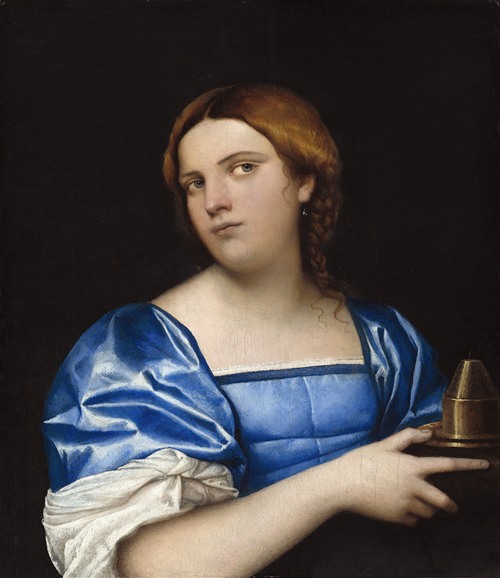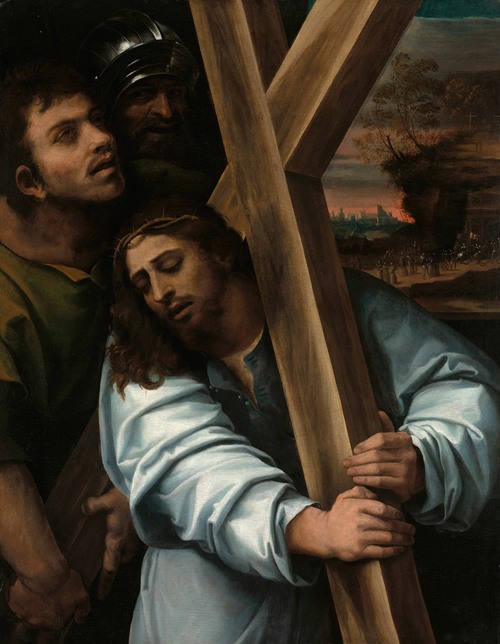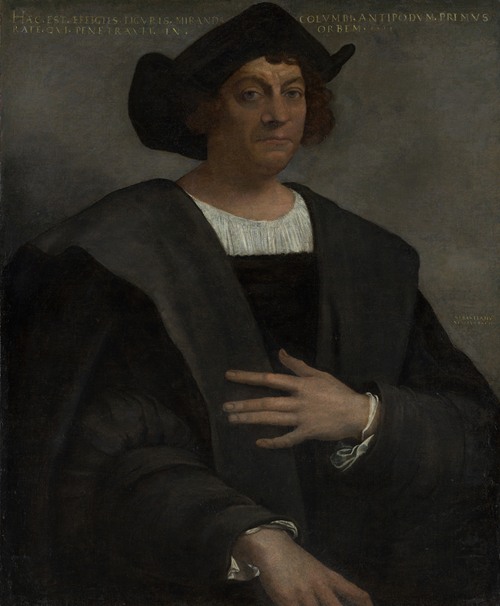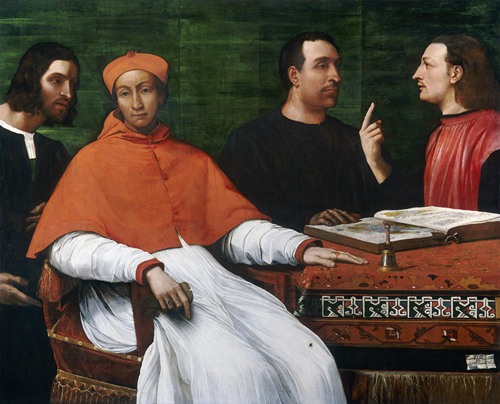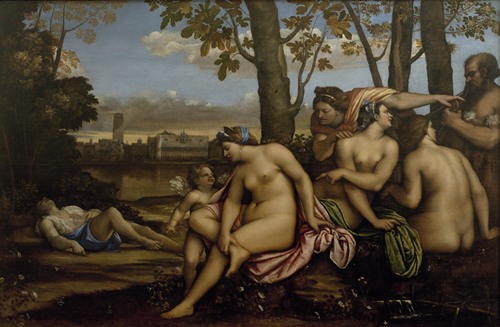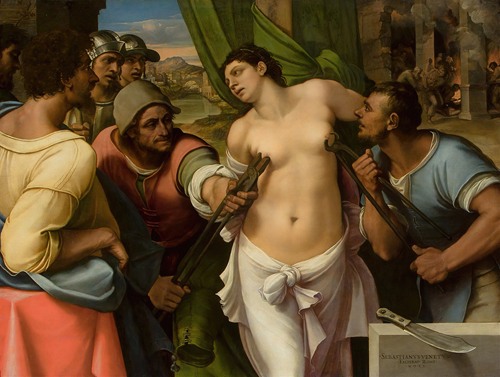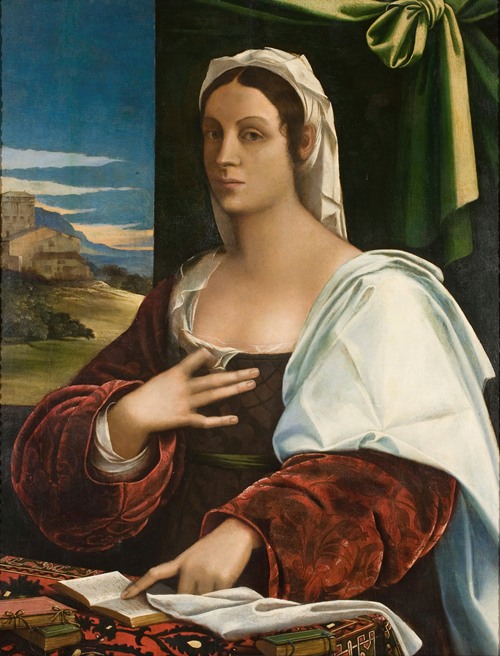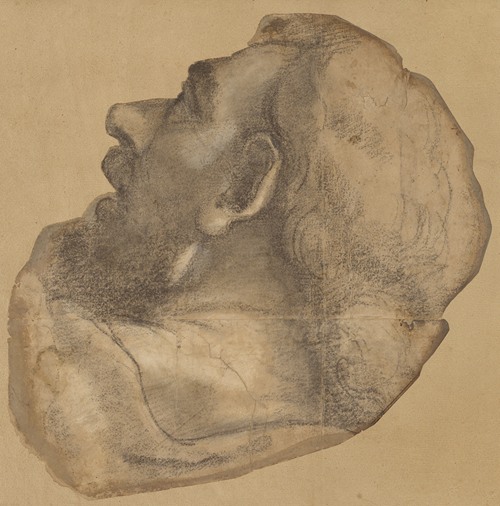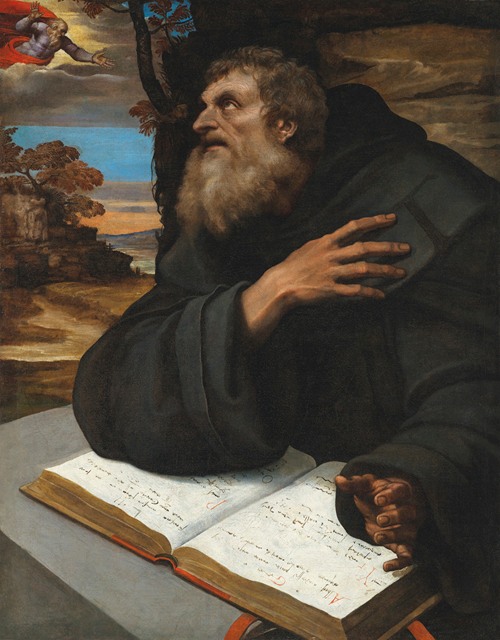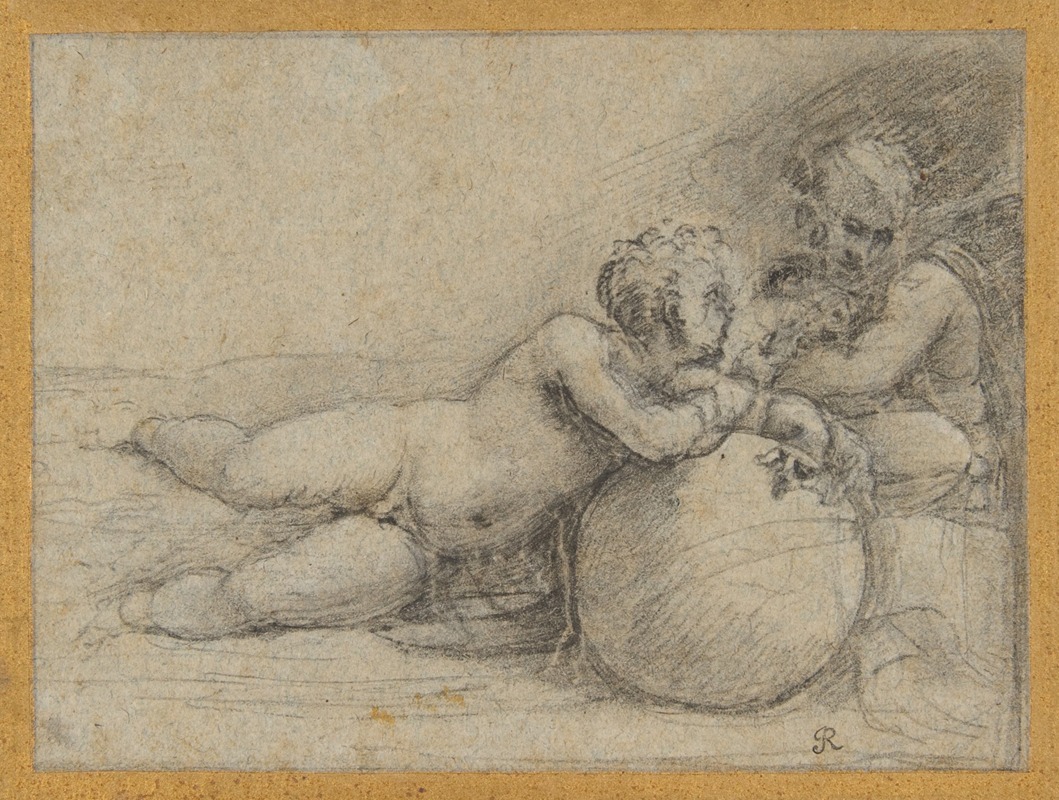
Sebastiano del Piombo was an Italian painter of the High Renaissance and early Mannerist periods famous as the only major artist of the period to combine the colouring of the Venetian school in which he was trained with the monumental forms of the Roman school. He belongs both to the painting school of his native city, Venice, where he made significant contributions before he left for Rome in 1511, and that of Rome, where he stayed for the rest of his life, and whose style he thoroughly adopted.
Born Sebastiano Luciani, after coming to Rome he became known as Sebastiano Veneziano or Viniziano ("Sebastian the Venetian"), until in 1531 he became the Keeper of the Seal to the Papacy, and so got the nickname del Piombo ("of the Lead") thereafter, from his new job title of piombatore. Friends like Michelangelo and Ariosto called him Fra Bastiano ("Brother Bastian").
Never a very disciplined or productive painter, his artistic productivity fell still further after becoming piombatore, which committed him to attend on the pope most days, to travel with him and to take holy orders as a friar, despite having a wife and two children. He now painted mostly portraits, and relatively few works of his survive compared to his great contemporaries in Rome. This limited his involvement with the Mannerist style of his later years.
Having achieved success as a lutenist in Venice when young, he turned to painting and trained with Giovanni Bellini and Giorgione. When he first went to Rome he worked alongside Raphael and then became one of the few painters to get on well with Michelangelo, who tried to promote his career by encouraging him to compete for commissions against Raphael. He painted portraits and religious subjects in oils, and once he was established avoided the large fresco schemes that took up so much of the time of Raphael and Michelangelo. His earlier career in both Venice and Rome was somewhat overshadowed by the presence of clearly greater painters in the same city, but after the death of Raphael in 1520 he became Rome's leading painter. His influence on other artists was limited by his lack of prominent pupils, and relatively little dissemination of his works in print copies.
Sebastiano del Piombo was probably born in Venice, though there is no certainty as to his background. His birthdate is extrapolated from Vasari's statement that he was 62 at his death in 1547. That he was first known as a musician and singer may suggest an upper-middle-class background; the extent to which his playing on the lute and other instruments was professional is unclear. Like his contemporary Raphael, his career was marked by his ability to get on well with both other artists and patrons. He began to train as a painter at a relatively late age, probably 18 or 20, so around 1503–05, becoming a pupil of Giovanni Bellini and probably afterwards of Giorgione, both of whose influence is apparent in his works; Vasari's mention of their relationship is rather vague: "si acconciò con Giorgione".
No signed or firmly documented works survive from his period painting in Venice, and many attributions are disputed. As with other artists, some of Sebastiano's works have long been confused with Giorgione's. Like Titian, he may have completed work left unfinished at Giorgione's death in 1510; Marcantonio Michiel says he finished The Three Philosophers. The earliest significant work attributed to him is a portrait of a girl in Budapest, of about 1505.
He is now usually assigned the unfinished and reworked Judgement of Solomon now at Kingston Lacy. This dramatic and imposing picture, "one of the masterpieces of Venetian narrative painting", was also long attributed to Giorgione; it may have been abandoned about 1508, though the estimated dates vary in the period 1505–1510. After extensive restoration in the 1980s, removing later overpainting, the painting is now left with traces of the three different compositions visible; still more can be seen with infra-red reflectography. Still over 2 × 3 metres, it seems originally to have been even larger, with some 40 cm lost along the left edge. There are two versions of the elaborate architectural background, which was a recurrent interest of Sebastiano's Venetian period. The last setting is in a basilica, which may reflect a "more learned" picture intended for a building holding courts of justice. The figure at the front of the executioner, left without clothes or the baby, is clearly drawn from classical sculpture.
Four standing figures of saints in niches on the organ-shutters of San Bartolomeo, Venice, now in the Gallerie dell'Accademia in Venice, date from c. 1508–09, and are "very Giorgionesque", especially the pair on the insides. They were painted at the same time as Giorgione's frescos for the Fondaco dei Tedeschi (now lost) just by the church, which was the German's church in Venice, and at this time also held Albrecht Dürer's Madonna of the Rose-Garlands of 1506. The outside pair of shutters also show what Sebastiano had learnt from Bellini. Their technique has developed "from the earlier smooth surface to the application of paint in heavy brushstrokes", and the figure of Saint Sebastian shows awareness of classical sculpture.
The main altarpiece for San Giovanni Crisostomo, Venice of 1510–11 shows the patron saint, Saint John Chrysostom reading aloud at a desk, a Mary Magdalene looking out at the viewer, and two other female and three male saints. The organ-shutters for the church were also painted. The style shows developments "towards a new fullness of form and breadth of movement" that may have been influenced by the Florentine painter Fra Bartolommeo, who was in Venice in 1508. Aspects of the composition were also innovative, and later copied by Venetian painters, including even Titian.
